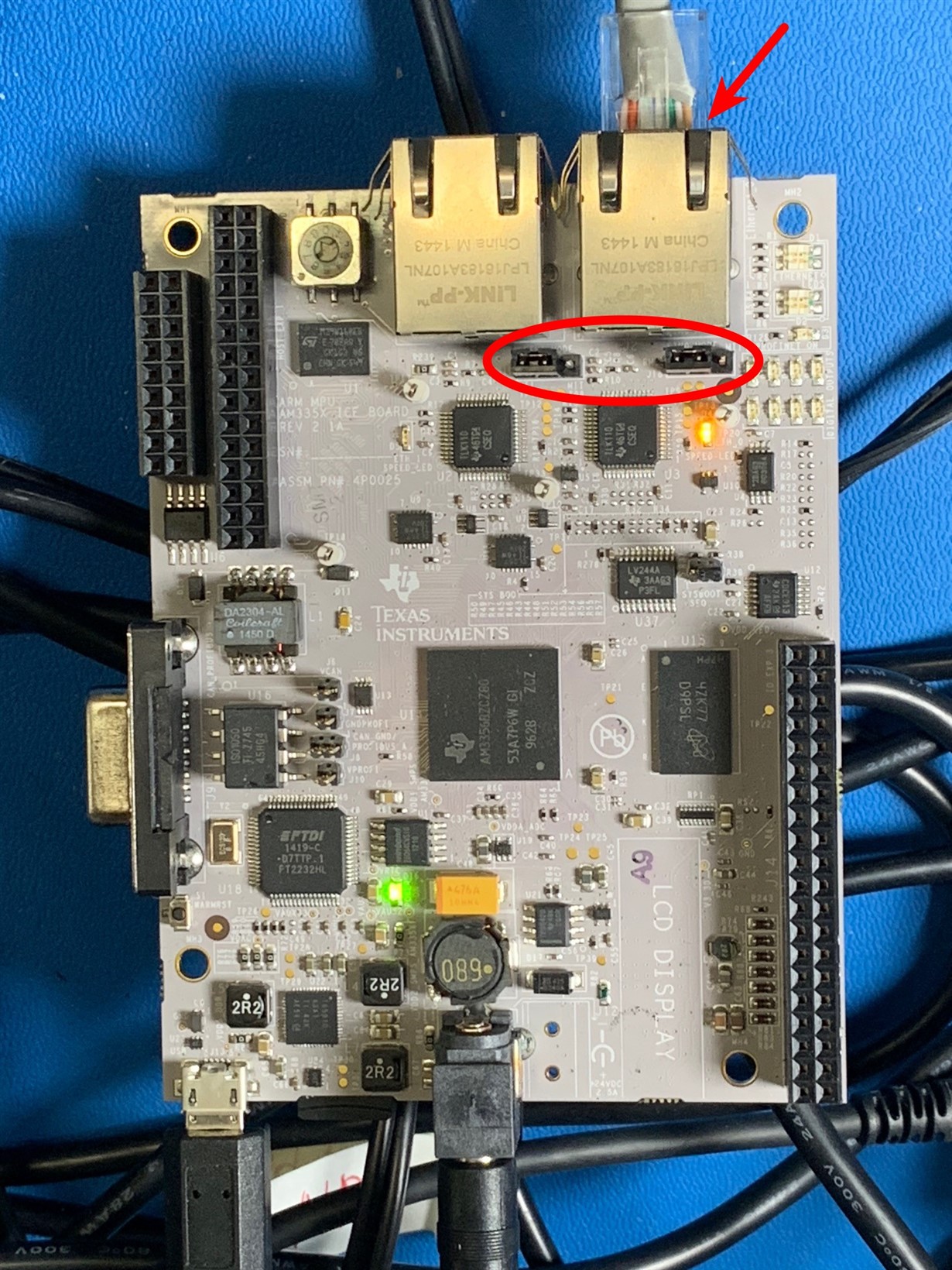Other Parts Discussed in Thread: AM3359
Tool/software: Linux
Hi,
I have a TMDSICE_v2 and I am using it to set up a working baseline for development.
I have gotten so far:
1) I have set up the host Linux development platform based on Ubuntu 18.0.4.
2) I have downloaded and installed the SDK for AM3359 on the host and run the setup.sh script.
3) I have deleted the SPI flash on TMDSICE_v2 and prepared a SD card.
3) I have also got minicom working over USB1.
4) I can boot TMDSICE_v2 using minicom and the SD card, I can log in as root. am3359-evm boots on the target.
5) I now want to boot over TFTP. I have previously installed the TFTP server on my Ubuntu host and tested it with another Windows computer. I can use the get and put commands to transfer files from the Linux host to the Windows computer. I conclude that the TFTP on the Ubuntu host is working properly and it is running.
6) To boot with U-boot over TFTP, I interrupt the target boot process. I enter U-Boot command line with the "=>" prompt. I have not found direct Ti documentation to help me in this part. But using general U-Boot guides, but the procedure here shows what I have done:
U-Boot 2018.01-g9d984f4548 (Apr 06 2019 - 07:42:30 +0000)
CPU : AM335X-GP rev 2.1
Model: TI AM3359 ICE-V2
DRAM: 256 MiB
ETH0, PRU
ETH1, PRU
NAND: 0 MiB
MMC: OMAP SD/MMC: 0
Net: cpsw, usb_ether
Hit any key to stop autoboot: 0
=> set serverip 192.168.2.60
=> saveenv
Saving Environment to FAT...
writing uboot.env
FAT: Misaligned buffer address (8def12f8)
done
=> set origbootcmd "bootcmd"
=> printenv origbootcmd
origbootcmd=bootcmd
=> set autoload no
=> set bootcmd "tftp ${kernel_addr} ${serverip}:zImage; tftp ${fdt_addr} ${serverip}:am335x-icev2.dtb; booti ${kernel_addr} - ${fdt_addr}"
=> reboot
Unknown command 'reboot' - try 'help'
=> boot
link up on port 0, speed 100, full duplex
Using cpsw device
TFTP from server 192.168.2.60; our IP address is 192.168.2.63
Filename 'zImage'.
Load address: 0x82000000
Loading: *
ARP Retry count exceeded; starting again
link up on port 0, speed 100, full duplex
Using cpsw device
TFTP from server 192.168.2.60; our IP address is 192.168.2.63
Filename 'am335x-icev2.dtb'.
Load address: 0x82000000
Loading: *
ARP Retry count exceeded; starting again
Unknown command 'booti' - try 'help'
=> printenv bootcmd
bootcmd=tftp 192.168.2.60:zImage; tftp 192.168.2.60:am335x-icev2.dtb; booti -
=>
I have defined the variable "serverip" to provide the server ip. I have also created the "bootcmd" to tell U-boot where to take the zImage file and which device tree to load. In the reference that I have looked at, there is booti command that does not seem to be recognized by the build of U-boot provided by Ti. The TFTP server and client attempt to connect, however, booti is not recognized and the system stops after two tries.
Using ifconfig, I have obtained the ip addresses of both the host and the TMDSICE_v2 target. I have also confirmed by looking at the router that the ip addresses of both the host and the TMDSICE_v2 are correct.
Could you please have a look at the above procedure and let me know if I have made any mistakes, and if so, please let me where. Also, could you please let me know whether there is a different form for the "booti" command that should be used to make the "bootcmd" work.
Thank you.


